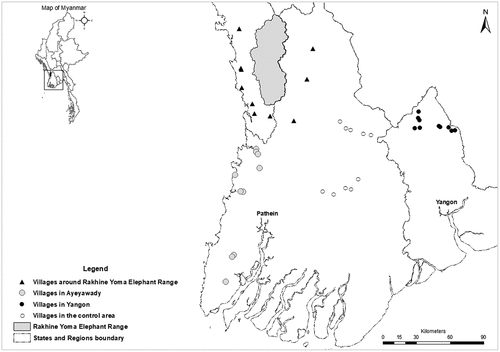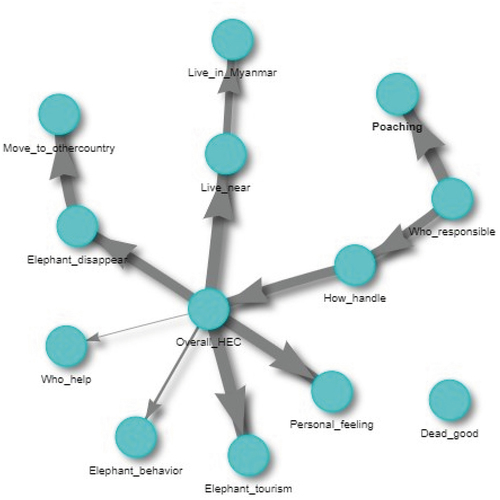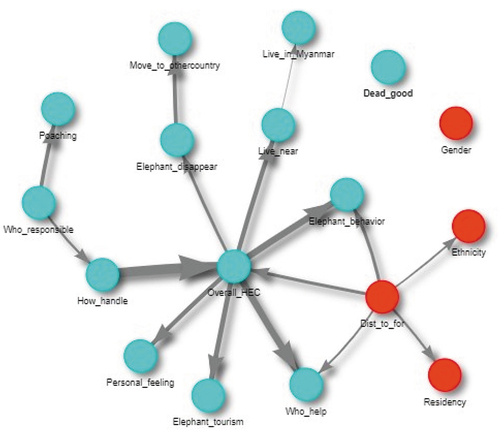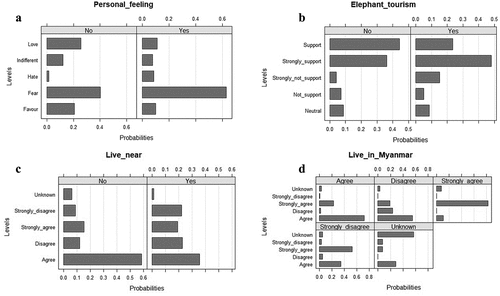Figures & data
Figure 1. Study area map showing the four different study regions in Myanmar within which attitudes of local inhabitants regarding human–elephant conflict, were surveyed.

Table 1. Characteristics of respondents (explanatory factors) in the study area.
Table 2. The list of questions that were asked to the respondents in the study on attitudes toward human–elephant conflict in Myanmar.
Figure 2. Causal relationship of response variables (nodes in turquoise) in the null model’s Bayesian Belief Network representing attitudes toward human–elephant conflict in Myanmar. Arc widths indicate the strength of the linkages in-between nodes.

Table 3. Chi-square statistics derived from Independence tests computing the shared mutual information between the explanatory factors (columns) and attitude variables (rows) regarding HEC in Myanmar. The pair of nodes which were significant at p < .05 (in bold) indicated dependence on each other.
Figure 3. A graphical representation of the extended model’s Bayesian Belief Network representing attitudes toward human–elephant conflict in Myanmar after combination with the explanatory variables (in red) that shared most mutual information with the null model’s nodes (including only attitudes, in turquoise). The thicknesses of arc widths indicate the strength of the linkages in-between nodes.

Figure 4. Conditional probability distributions of a Bayesian Belief Network representing attitudes toward human–elephant conflict in Myanmar for (a) Who_help conditional on HEC experience (No/Yes) and distance to the forest (<1 km/1–4 km/4–6 km/>10 km); and (b) Elephant_behavior conditional on HEC experience and distance to the forest.

Figure 5. Conditional probability distributions of a Bayesian Belief Network representing attitudes toward human–elephant conflict in Myanmar between (a) Personal_feeling conditional on Overall_HEC (No/Yes); (b) Elephant_tourism conditional on HEC_experience (No/Yes); (c) Live_near conditional on Overall_HEC (No/Yes); and (d) Live_in_Myanmar conditional on Live_near (Strongly agree/Agree/Disagree/Strongly disagree/Unknown).

Figure 6. Conditional probability distributions of a Bayesian Belief Network representing attitudes toward human–elephant conflict in Myanmar for (a) Elephant_disappear conditional on Overall_HEC (No/Yes); and (b) Move_to_othercountry conditional on Elephant_disappear (>Farming/>Livelihood/GoodBad/NotExtinct /Unknown).

